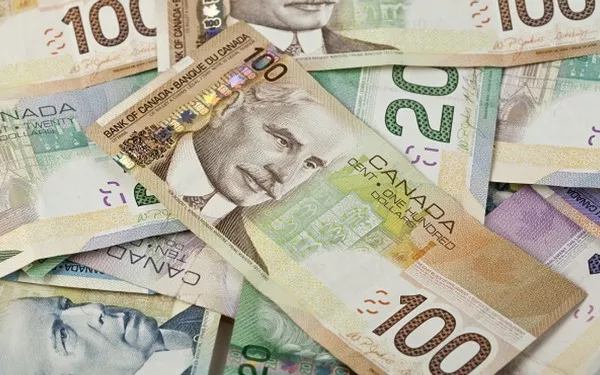The Canadian $2 dollar bill holds a special place in the hearts of many Canadians, known for its distinct design and historical significance. Introduced in the 1970s and eventually replaced by the $2 coin (the “toonie”) in 1996, these bills are no longer in circulation but remain sought after by collectors and enthusiasts. This article explores the value, history, and collectibility of the Canadian $2 dollar bill, offering insights into what makes them valuable and how to determine their worth in today’s market.
History of the Canadian $2 Dollar Bill
Introduction and Design
The Canadian $2 dollar bill, featuring a portrait of Queen Elizabeth II, was first issued by the Bank of Canada in 1974. The front of the bill showcases a vignette of Queen Elizabeth II, while the back depicts a family of polar bears in their natural habitat. This design, created by artist Roger Beaulieu, quickly became iconic and synonymous with Canadian currency.
Transition to the $2 Coin (“Toonie”)
In 1996, Canada introduced the $2 coin, colloquially known as the “toonie,” to replace the $2 bill. The decision was influenced by the longer lifespan and cost-effectiveness of coins compared to paper currency. Despite the introduction of the toonie, $2 bills remained legal tender until they were gradually phased out of circulation.
Collectibility of the Canadian $2 Dollar Bill
Factors Affecting Value
Several factors contribute to the collectibility and value of Canadian $2 dollar bills:
Condition: The condition of the bill is crucial in determining its value. Uncirculated bills with minimal wear and crisp edges command higher prices among collectors.
Serial Numbers: Bills with unique or low serial numbers, such as “0000001” or numbers in sequential order, are often more valuable to collectors.
Signatures and Seals: Variations in signatures of bank officials or different series and seals can influence a bill’s collectible value.
Rarity: Certain years or series of $2 bills may be rarer due to limited production or specific printing errors, making them more sought after.
Popular Series and Designs
Over the years, the Canadian $2 dollar bill underwent several design changes and series releases, each contributing to its collectibility:
Devil’s Face Series: The early issues of the $2 bill featured a design known as the “Devil’s Face,” characterized by an unintended image resembling a devil in Queen Elizabeth II’s hair. These bills are highly sought after by collectors for their historical and artistic significance.
Replacement Notes: Replacement notes, identifiable by asterisks or special serial numbers, were issued to replace damaged or defective bills. These replacement notes often fetch higher prices due to their limited circulation.
See Also: Does Singapore Have 1 Cent?
Determining the Value of a Canadian $2 Dollar Bill
Market Demand and Rarity
The value of a Canadian $2 dollar bill depends largely on market demand and rarity. While some bills may have a face value of $2, their collectible worth can far exceed this amount:
Collector Market: There is a vibrant market among numismatists (coin and currency collectors) for Canadian $2 dollar bills. Auctions, online marketplaces, and specialized currency dealers often facilitate the buying and selling of these bills.
Condition Grading: Bills are graded based on their condition, ranging from “Poor” to “Gem Uncirculated.” Professional grading services provide certifications that authenticate and assess the condition of bills, influencing their market value.
Recent Auction and Sale Prices
Recent auction records and sales can provide insights into the current value of Canadian $2 dollar bills:
Devil’s Face Series: In 2023, a well-preserved Devil’s Face series $2 bill sold at auction for CAD 10,000, highlighting the premium placed on rare and historical designs.
Special Serial Numbers: Bills with unique serial numbers or printing errors have been known to fetch prices well above their face value, depending on their rarity and desirability among collectors.
Preserving and Caring for Canadian $2 Dollar Bills
Tips for Preservation
To maintain the condition and value of Canadian $2 dollar bills, consider the following preservation tips:
Storage: Store bills in a cool, dry place away from direct sunlight and humidity to prevent deterioration.
Handling: Handle bills with clean hands to avoid transferring oils or dirt, which can stain or damage the paper.
Protection: Use protective sleeves or currency holders designed for banknotes to prevent creasing or tearing.
Conclusion
The Canadian $2 dollar bill, though no longer in circulation, remains a cherished piece of Canadian numismatic history. Its distinctive designs, including the iconic Devil’s Face series, and cultural significance continue to captivate collectors and enthusiasts alike. While some bills may hold significant monetary value beyond their face value, others are valued for their historical context or artistic merit. Whether you’re a seasoned collector or someone curious about Canadian currency, understanding the factors influencing the value of $2 bills can enhance appreciation for these unique pieces of monetary heritage. As interest in numismatics grows, so too does the allure of owning a piece of Canada’s past in the form of a Canadian $2 dollar bill.
Related Topics:


























